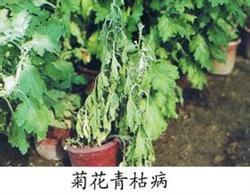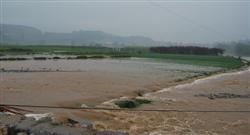Control methods of bacterial wilt of chrysanthemum

First, the symptoms of damage: the upper leaves of the infected plant wilted for 3-5 days, the bottom leaves turned yellow, the appearance of stem nodes near the ground was brown, the succulent part of the root rotted, the epidermis and fleshy root also turned brown, and then became lead-white. The vascular bundles of the diseased stems turn brown, and the diseased roots can also flow out of the cracks when they are squeezed by hands or spilled by moisturizing. The course of the disease is short, from the onset to death only a few days, different from the long course of Fusarium wilt. Second, the morphological characteristics of pathogens: the pathogen is Ralstoniasolanacearum, short rod-shaped, single-celled, round at both ends, solitary or twin, with a size of 0.9-2.0 × 0.5-0.8 (micron). Overgrowth flagella 1-3; colony round or irregular on Agar medium, slightly raised, dirty white or dark brown, smooth with bright light. Gram staining was negative. Third, the characteristics of the disease: the bacteria overwintered in the disease residue and organic fertilizer mixed with disease residue. When there is an appropriate time in the next spring, it often invades from the root and neck wound door, mainly destroying the transport tissue, making it brown and rotten, causing the aboveground parts to die or wither. The bacteria is mainly transmitted by Cao strain, and it can also be transmitted by soil, irrigation water and agricultural tools. In the hot and rainy season, the fields with poor drainage are prone to disease, the terrain is low-lying, and the disease is serious in continuous cropping land. Fourth, control methods: (1) select disease-resistant varieties. (2) careful maintenance, timely removal of diseased plants, and disinfection of diseased points with quicklime. (3) soaking roots with Ralstonia solanacearum antagonistic bacteria MA-7 and NOE-104 can also be sprayed or infused with 72% agricultural streptomycin sulfate soluble powder 3000 times or 20% Longke bacteria suspension 500x, 50% succinic fertilizer copper wettable powder 500x, 30% Ludabao suspension 400x, 53.8% can kill 2000 dry suspension 900x-1000 times once every 7-10 days. Continuous prevention and treatment for 2-3 times.
- Prev

Flood potassium fertilizer loss, crop potassium supplement is indispensable
In previous years, potassium deficiency symptoms of cotton, rice, corn, soybean, peanut and other crops were generally seen in several provinces in the middle and lower reaches of the Yangtze River. In addition to potassium deficiency in some soils themselves, it was largely related to the heavy rainfall and potassium loss during crop growth this year. From the cotton point of view, most cotton fields are short of...
- Next

Control methods of Fusarium wilt of chrysanthemum
First, the symptoms of damage: at the beginning of the disease, the leaf color became light yellow, wilted and drooping, the base of the stem also became light brown, the vascular bundles of the stem base became brown, and the vascular bundles of the upward expanding branches gradually became light brown, which led to root bark necrosis or blackening and rot, and some stems split at the base. It occurs when the humidity is high.
Related
- Fuxing push coffee new agricultural production and marketing class: lack of small-scale processing plants
- Jujube rice field leisure farm deep ploughing Yilan for five years to create a space for organic food and play
- Nongyu Farm-A trial of organic papaya for brave women with advanced technology
- Four points for attention in the prevention and control of diseases and insect pests of edible fungi
- How to add nutrient solution to Edible Fungi
- Is there any good way to control edible fungus mites?
- Open Inoculation Technology of Edible Fungi
- Is there any clever way to use fertilizer for edible fungus in winter?
- What agents are used to kill the pathogens of edible fungi in the mushroom shed?
- Rapid drying of Edible Fungi

